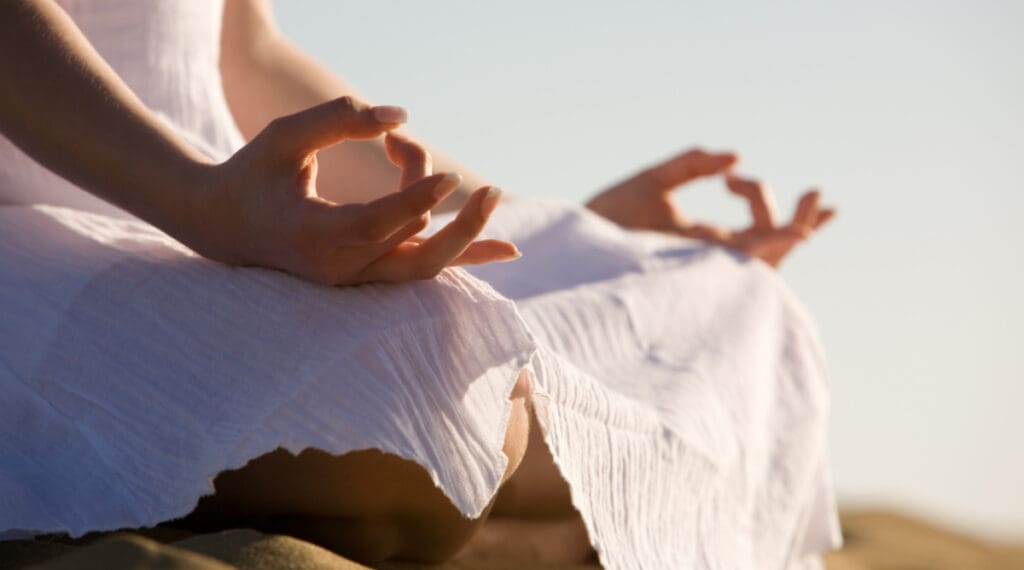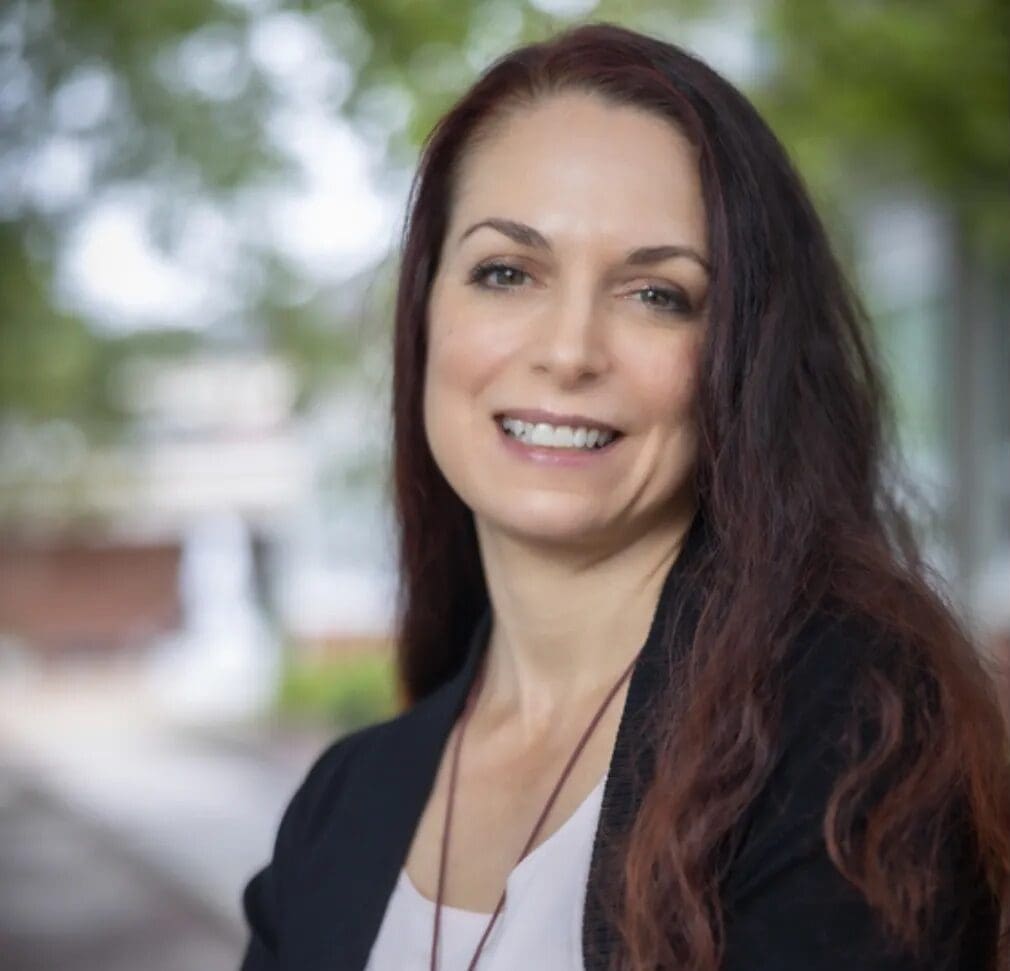Yoga is a form of exercise, specifically stretching and deep breathing to relieve anxiety and stress. It’s good for the body. It’s great at calming the mind.
That doesn’t sound dangerous, does it?
Well … If that’s what yoga is truly all about, then no. There’s nothing wrong with stretching the body and practicing deep, calming breaths to soothe the nervous system. After all, our bodies are the temples of the Holy Spirit (1 Cor 6:19). It’s a great thing to take care of ourselves. Particularly in times of high-stress and trauma, self-care is essential.
The problem is, yoga is an Eastern pagan spirituality. And, it’s an open door to alternate spiritualities.
Open one door and … watch out.
You can’t separate yoga from the spiritual energies inherent in the practice. Practicing yoga without incorporating Eastern pagan spirituality into the routine cannot rightly be called “yoga.” In this case, a person is merely stretching and breathing.
Yoga was first mentioned in the Rig Veda (one of the four canonical sacred texts of Hinduism), which dates to around 1,000 B.C. It incorporates and intertwines breathing practices (pranayama) with meditation, mantras, asanas (the physical postures) and mudras.
In case you’re not sure what a mudra is, and think you’re not actively participating in Hindu spirituality when you practice yoga, a mudra is a sacred symbolic hand gesture designed to “deepen one’s practice and awaken the power of the Divine,” according the popular magazine, Yoga Journal. So yes, even how you place your hands in a yoga pose has a spiritual component to it.
It’s a common misperception in the Western world to believe that yoga is all about the physical poses and deep breathing, and nothing else. I’ve brought up this topic several times on Twitter, and invariably I’ve received the same misguided misperceptions: people blasting me for claiming that yoga is spiritual and should be avoided by Catholics. They state that I’m a narrow-minded and ignorant fool for even suggesting such a thing. These people claim that yoga is healthy for the body, and there’s nothing wrong with it.
They make this false claim because they’ve been gaslit by the Western interpretation of an Eastern spirituality. They view yoga from their isolated perspective without bothering to understand its deep spiritual roots—and the gods, goddesses, energies and spirits intertwined within the practice.
It was around the centuries of 500 B.C. to 800 A.D. that yoga began to gain popularity. Buddha, who lived between the 6th and 4th centuries B.C., developed the eight-fold path, a spiritual practice that is now considered the precursor of Yoga Sadhana (daily spiritual practice). The goal is focusing on controlling the mind by bringing the physical body and the consciousness under tight control in order to experience “nirvana.”
In other words, rather than focusing one’s mind on Christ, the goal is to focus exclusively on the interior self.
Hmm. That sounds a bit egoistic. And it leaves the door open for all sorts of evil to enter—beginning with the original sin, that of pride.
When the unclean spirit has gone out of a man, he passes through waterless places seeking rest, but he finds none. Then he says, “I will return to my house from which I came.” And when he comes he finds it empty, swept, and put in order. Then he goes and brings with him seven other spirits more evil than himself, and they enter and dwell there; and the last state of that man becomes worse than the first.”
(Matt 12:43-45)
Although a cradle Catholic, I wandered from the Church for nine sad, dark years. During that time, I was involved in a variety of dangerous spiritualities—I even went so far as to obtain a bachelor’s degree in interfaith theology. (I’ve since redeemed myself by earning a BA in Catholic theology.) I also attended yoga teacher training to become a certified yoga instructor.
I learned a lot. Such as, yoga is not about the asanas (physical postures). Yoga is so much more than that.
And it’s dangerous.
The bodily movements of yoga are of relatively minor importance to the practice, whether the person who thinks they’re “only exercising” realizes it or not. It’s true that in the Western world, yoga has been convoluted and contorted to the point that people think it’s stretching only, but sadly they’re being deceived by darkness shrouding itself in a false aura of light (2 Cor. 11:14).
Yoga is, first and foremost, a spirituality. If you don’t realize or acknowledge this, if you think yoga is mere exercise, you have no idea what yoga is.
And you’re setting yourself up for a downfall.
If you authentically practice yoga, you are by default practicing Hindu spirituality and honoring false gods and goddesses. Deities such as the elephant-like Ganesha or the scary, demoness Kali are part and parcel of a yoga routine and its various asanas, mudras, and interior mindsets—whether you realize it or not.
“Yoga is not an exercise regimen. The eight limbs of yoga provide a spiritual way of life designed to unite us with the whole of existence. There is a tendency in the West to focus on only one limb of yoga, the asanas, or postures. This ancient science goes far beyond the mere physical aspects, by way of deepening the connection between mind, body and most important of all, the spirit. The spiritual aspect of yoga can help yogis develop integration of the inner being as well as oneness with the Supreme Consciousness. And it all starts with the body and the asanas or postures.”
(The Himalayan Yoga Institute)
Do you really want to connect with “the Supreme Consciousness”? What does that even mean? Who are you invoking? Even if in goodwill and with good intentions, it’s easy to invoke evil spirits, as yogic philosophy proves. “Supreme Consciousness” means nothing more than trickery at best, and an opening to demonic forces at worst.
Don’t go there. Just. Don’t.
The popular magazine Yoga Journal is never shy on touting the spirituality of yoga. “Yoga is so much more than just asana. This path can also take you on an interior journey to meet your true Self.” Yet how can you truly find your “true Self” when you eliminate the True God through engaging in pagan practices?
You can’t. It’s impossible. You’ll just be opening doors that should never exist in the first place.
Here’s another question I get asked frequently: “Does that mean Catholics can’t stretch?”
Answer: No, of course not!
I stretch all the time. Every day, in fact. I’m a fitness professional, someone who has made health and wellness my career. In 1999 I founded a company called Advanced Workouts—a business I sold in 2015 so I could write full time and study theology. However, during those sixteen years I provided fitness consultations, taught classes at various gyms, sold at-home workouts and equipment, and became a certified nutrition consultant. And, as I mentioned earlier, I even became so heavily involved in yoga that I enrolled in an extensive course to become an instructor.
In other words, I know health. I know how to take care of my body—which is the temple of the Holy Spirit (1 Cor. 6:19)—and how to help others learn how to cherish the physical gift God has given them.
This means I also know yoga. And stretching. And the crucial difference between the two.
“Yoga originated in ancient India as a form of religious practice that later went on to become its own theological school. It is considered to be one of the six major orthodox schools of Hinduism. Yoga as a Hindu theological school is seen as a form of mysticism, but it has the same goals as any school or tradition in Hinduism. Yogis, or yoga practitioners, aim to obtain moksha or liberation from the suffering of samsara, the cycle of birth, death and rebirth that is at the center of Hinduism.”
(Stephanie Hertzenberg, Belief.net)
Catholics can and should stretch their bodies. There are many stretching techniques and movements that help enhance flexibility, release muscle tension after an intense workout, and promote relaxation. There’s no need to engage in a yoga practice in order to gain these benefits.
Don’t think, simply because you stretch your hammies or quads, twist to lubricate your spinal column, or arch forward to ease the ache in your core after a tough ab routine, that you’re practicing yoga.
Don’t unintentionally invite evil spirits to enter where you don’t truly want them.
Please, by all means, make exercise a regular part of your life. And after a tough routine, stretching is a must. If you want to breath deeply to calm anxious nerves, by all means do so—God created your lungs, after all. Breathe deeply and peacefully, while interiorly praying in the name of Jesus.
There’s nothing wrong with this, because it isn’t yoga. Yoga doesn’t have a copyright on deep breathing and stretching. Realizing the difference is crucial.
Although the disintegration from yoga’s true spiritual and cultural roots may water-down the risk of practicing this type of pagan spirituality, it in no way eliminates it. Remember, evil disguises itself as light (2 Cor. 11:14). Also remember, those who practice a watered-down version of another culture’s spirituality are still openly exposing themselves to the original roots of their false-god worship and paganism.
Don’t go there. Just don’t. Some doors should never be opened.
This post was originally published on Missio Dei and is reprinted here with permission of the author.





